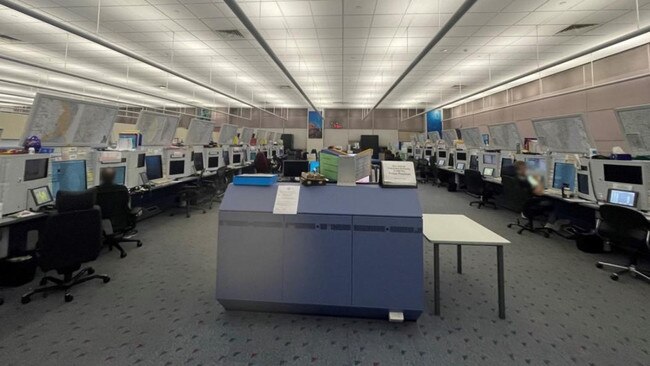Air traffic controller found asleep at workstation, ATSB report finds
A Queensland air traffic controller was found asleep at their workstation with a blanket over them, while on duty, a report has found.

QLD News
Don't miss out on the headlines from QLD News. Followed categories will be added to My News.
An air traffic controller was found asleep by a colleague, lying across two chairs under a blanket after working multiple night shifts.
An Australian Transport Safety Bureau investigation found the incident, in December 2022, at the Brisbane Air Traffic Services Centre was caused by bad rostering and fatigue management.
The approach controller, who fell asleep while on duty managing the Cairns Terminal Control Unit, was suffering from sleep debt after multiple consecutive night shifts.
The investigation found that several factors contributed to the controller falling asleep including the time of day, the very low workload at the time and a roster pattern with multiple consecutive night shifts.
It was also noted that the controller increased their risk of falling asleep by “lying across 2 chairs, not moving, and not undertaking activities to maintain mental alertness”.
“The controller had also been working multiple night shifts with reduced extended rest periods, which likely reduced their ability to obtain restorative sleep,” ATSB Chief Commissioner Angus Bell said.
The report revealed that when the controller was found asleep, no traffic was present in the airspace he was monitoring.
It was usual for no traffic to be within the Cairns TCU airspace at that time of day, and there were no scheduled flights until after the worker’s shift.
The ATSB investigation raised concern over the controller potentially experiencing a phenomenon known as “sleep inertia” had they been woken by a radio broadcast.
The temporary disorientation increases the risk of delayed communications, or incorrect instructions/actions, and would likely effect their ability to manage any conflicts arising from traffic infringing their airspace without a clearance.
The ATSB Chief Commissioner said although there were no negative consequences from this occurrence, it highlighted areas of improvement in work scheduling and fatigue risk management.
The broader management of fatigue by Airservices Australia was also identified by the investigation.
The ATSB report highlighted that although Airservices Australia’s fatigue assessment and control tool (FACT) was sufficient in identifying situational factors influencing fatigue, the tool’s efficacy was limited as low workload was not identified by supervisors as a fatigue hazard.
“An over-reliance on tactical changes to manage the roster at Airservices was likely due to an underlying lack of resources,” Mr Mitchell said.
“As a result, cumulative fatigue was not being effectively managed strategically, and an over-reliance on tactical principles did not identify or manage fatigue risks arising from the work schedule.”
In the aftermath of the incident, the investigation found the air traffic control provider had increased the overall number of air traffic controllers, including in the North Queensland group.


